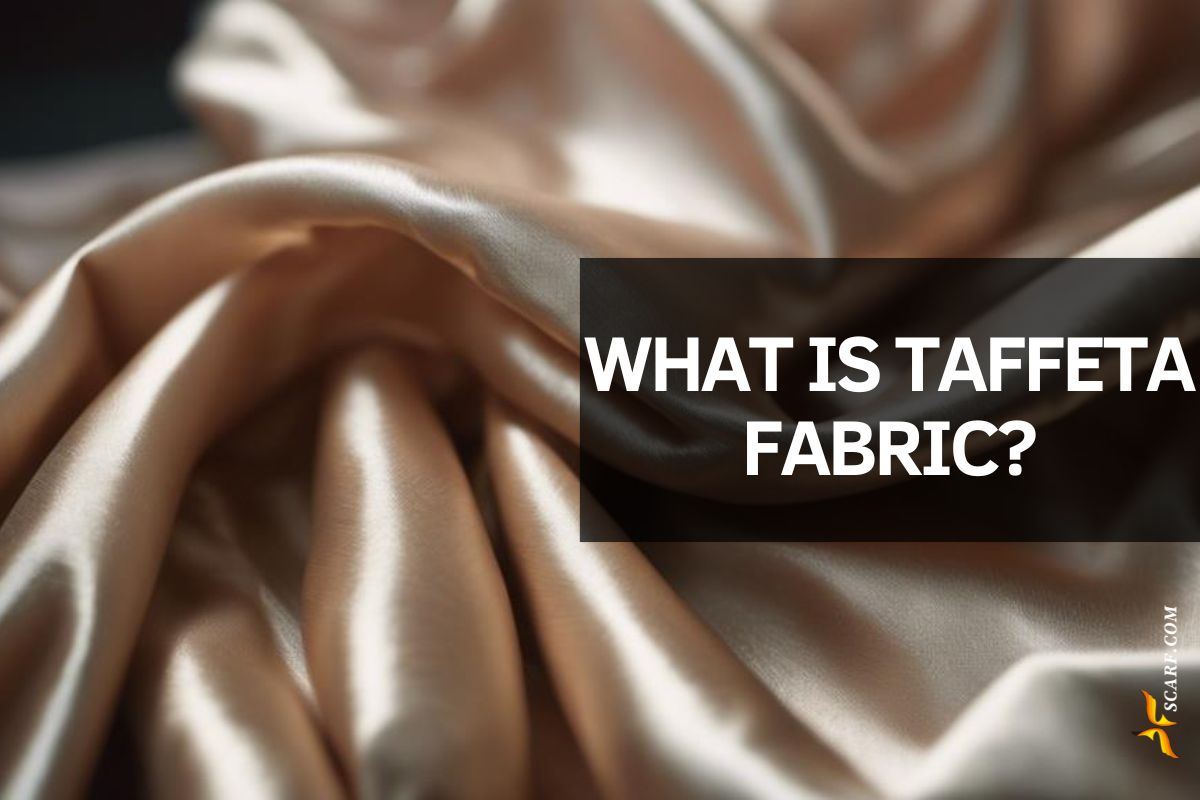Want fabrics that are both textured and high-end? Taffeta fabric is your best choice.
Taffeta fabric embodies timeless elegance with its crisp texture and luminous sheen.
In this article, we will explore the taffeta fabric, material, types and use…
Short answer
Taffeta is a smooth, crisp woven fabric known for its slight sheen and distinctive rustle, perfect for formal wear and luxury applications.
This distinctive material, woven from silk or synthetic fibers, creates structured silhouettes perfect for special occasions.
The fabric’s characteristic rustling sound adds an auditory dimension to its visual appeal.
What is taffeta fabric?
Taffeta is a crisp, smooth fabric made from silk, polyester, or nylon.
It’s tightly woven with a fine, lustrous finish and has a slight sheen.
Known for its rustling sound when moved, taffeta holds its shape well, is often used in formal wear like evening gowns, dresses, and linings.
What is taffeta fabric made of?
Taffeta fabric is created through a specialized plain weaving technique where tightly twisted warp (vertical) and weft (horizontal) threads interlace at right angles.
For silk taffeta, artisans use high-quality silk filaments that are carefully degummed and twisted before weaving.
The threads undergo a special sizing process to enhance stiffness.
The fabric’s signature rustling sound develops during finishing, when the woven material undergoes calendering – a heat and pressure treatment that enhances its sheen.
Types of taffeta fabric
Each type varies in texture, shine, and use.
Silk Taffeta
Luxurious, smooth, and natural with a crisp feel.
Polyester Taffeta
More affordable and durable than silk.
Nylon Taffeta
Lightweight and water-resistant, often used in linings or outerwear.
Paper Taffeta
Very stiff and dry, used for dramatic fashion pieces.
Shot Taffeta
Woven with different colored threads for an iridescent look.
Stretch Taffeta
Has spandex for added flexibility and comfort.
Embossed or Printed Taffeta
Features patterns or textures pressed into the fabric.
What is taffeta fabric used for?
It isn’t commonly used in everyday clothing; it is more commonly used in big-ticket apparel like wedding dresses and evening wear.
Fashion designers employ taffeta for transformative evening wear.
Its sculptural qualities enhance formal tailoring. Bridal designers value its ability to hold intricate pleating and volume.
Interior decorators utilize taffeta’s luminous qualities in window treatments.
Caring for taffeta fabric
Gentle hand washing preserves delicate silk varieties.
Professional cleaning ensures optimal results for special occasion garments.
Proper storage prevents unwanted creasing in all types.
Customized wholesale taffeta fabric
Looking for unique and high-quality scarf and beachwear customization solutions?
We are a professional taffeta fabric product manufacturer, focusing on the production of customized scarves, beachwear, shawls and other fashion items.
The fabric is light and breathable, with a full gloss, which is suitable for vacation wear and can also add highlights to daily looks.
Whether it is brand customization, e-commerce hot-selling models, or mass production, we can provide you with one-stop services from material selection, sampling to finished products to ensure that every product has both beauty and quality.
🌟 Support OEM/ODM, customized with drawings and samples
📦 Small batch order, fast delivery
📞 Contact us now for free sampling and quotation!
FAQ
Is taffeta fabric waterproof?
Taffeta is not waterproof, for full waterproofing, a special coating is needed.
What determines taffeta’s price point?
Silk commands premium pricing while polyester offers accessible alternatives.
How should taffeta be stored?
Flat or rolled storage prevents permanent crease formation.
Is taffeta suitable for warm weather?
The fabric’s limited breathability makes it better suited for cooler seasons.
What distinguishes taffeta from satin?
Structural rigidity contrasts with satin’s fluid drape.
Why does taffeta produce sound?
Tightly woven fibers create characteristic auditory texture.
Can taffeta be colored?
Silk accepts dyes more readily than synthetic versions.
What are taffeta’s environmental impacts?
Natural silk biodegrades while synthetics present recycling challenges.
What mimics silk taffeta effectively?
Polyester versions approximate the look with enhanced practicality.
How long does taffeta last?
Decades of service are possible with proper maintenance.



